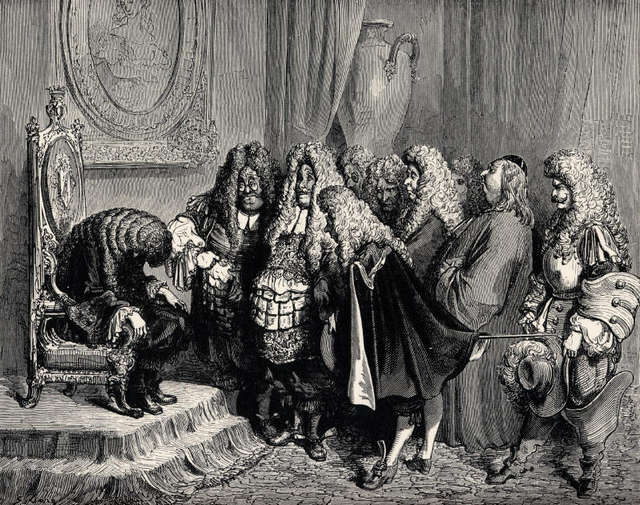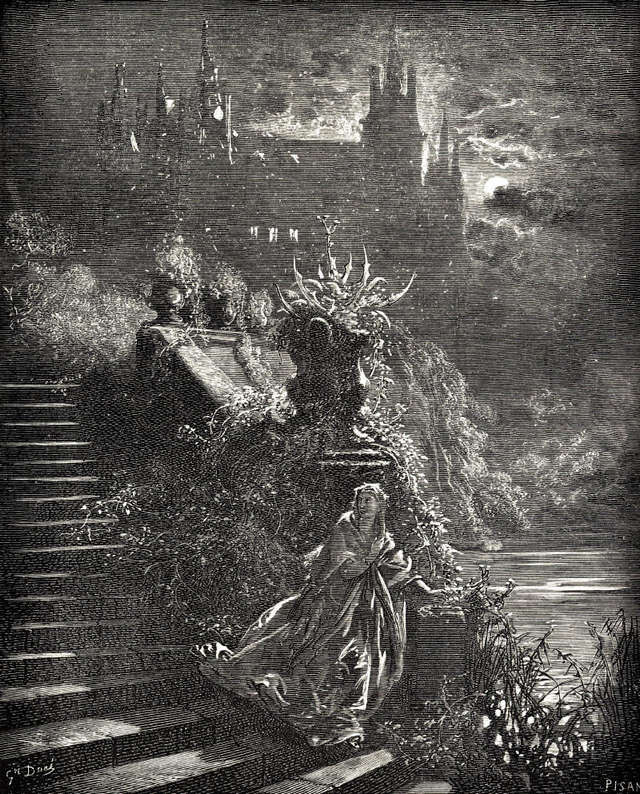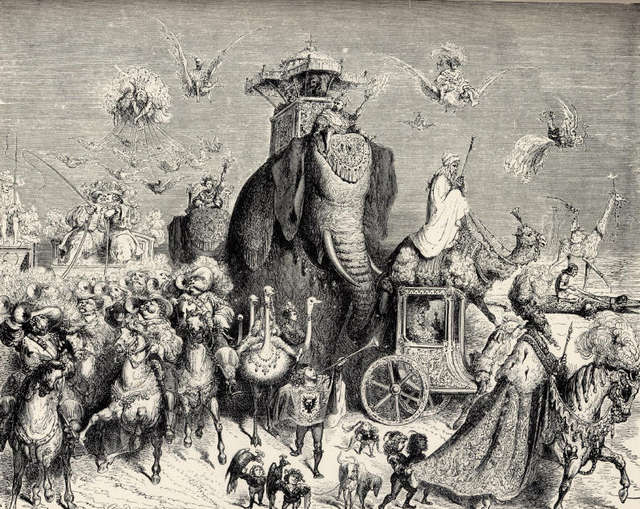This fairy tale, written by Charles Perrault is well known among fairy tale lovers but pretty neglected in the mainstream. Donkeyskin talks about a widower, powerful king, who set so high standards for his new wife, only his own daughter could match them. Of course, she was not very excited about his idea, so she escapes. After some hiding, she finds her real (and appropriate love) and everybody lives happily ever after…
Donkeyskin by Clement Pierre Marillier (1740-1808)
As being a forgotten classic, it is appropriate to present a short summary of Donkeyskin:
Once there was a king, married with a beautiful wife. They had a lovely daughter and a magic donkey who's poop was made of gold, what made them very rich. But the queen fare ill and on her deathbed made her husband to promise her he will remarry only if he finds a woman of the same qualities as her's.
The king soon realized he can keep his promise only if he marries his own daughter. The girl was certainly in an uncomfortable position, so she sought an advice from her godmother. She told her to claim impossible - extremely precious gowns and if the king by any chance fulfills these demands, a skin of the magic donkey.
But king gave her all and the princess decided to run away, disguised in the very same donkey skin. For some time she worked in a certain castle as a kitchen helper, still covered with donkey skin, wearing her precious gowns only on special days without any audience. On one such occasion, a prince saw her through the keyhole and demanded to be served a cake, made by the kitchen helper.
While making the cake, she lost the ring. The prince found it on his plate and declaring he will marry the girl who's finger fits the ring. It was the finger of the girl in donkey skin. They married, threw a huge party, and at the same time she heard the news about her father. He found a nice widow and remarried. Happy ending for everybody!
For a good measure here are six engravings for the Peau d'Ane (Donkeyskin in French) by Gustave Dore:






And here are some more interesting facts:
1. The motif of Donkeyskin is losing its popularity in fairy tales. Father-daughter issues, well known from Greek drama, were not in high demand after transformation of a wonder tale (for adults) to fairy tale (for children, at least from the 18th century), where mother-child issues became more and more important. But we can easily find dozens of versions all around the world, where the father wants to marry his daughter, just fur becomes pig’s, bear’s, cat’s, rabbit’s, cow’s…
Some of these variants are:
- All Kinds of Fur (Greece)
- Allerleirauh (Germany)
- Ass Skin (Basque)
- Broomthrow, Brushthrow, Combthrow (Austria)
- Cap O' Rushes (England)
- Catskin (England)
- Doralice (Italy)
- Fair Maria Wood (Italy)
- Margery White Coats (Scotland)
- Pigskin (Ukraine)
- The Beautiful Princess (Lithuania)
- The Emperor's Daughter in the Pig Stall (Romania)
- The King Who Wished to Marry His Daughter (Scotland)
- The Princess in the Cat-Skins (Ireland)
- The Princess That Wore A Rabbit-Skin Dress
- The Princess Who Would Not Marry Her Father (Portugal)
- The She-Bear (Italy)
- Tattercoats (England)
2. Donkeyskin is really a subvariant of Cinderella, what is most obvious when the prince, in the end, searches for the girl who's finger best fits the ring. Similarities with three precious gowns are also obvious. But it has also a lot of similarities with The Goose Girl, where the princess (unsuccessfully) tries to hide her royal origin.
3. Donkey is a symbol of a worker, lower class, thus being an ideal material for the transformation in fairy tales, where the change of social class is probably most popular of all. We can find a donkey in lots of fairy tales. The Wishing-Table, the Gold-Ass, and the Cudgel in the Sack, The Donkey Cabbage, The Bremen Town-Musicians or The Donkey are all found in Grimm’s fairy tales (Donkeyskin is Perrault’s). Donkey also personifies determination, another well-known quality in fairy tales.
Have you learned anything useful?

